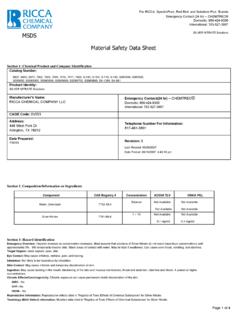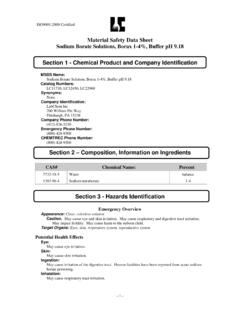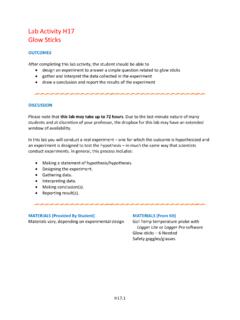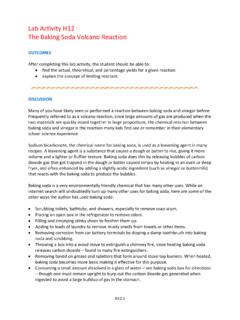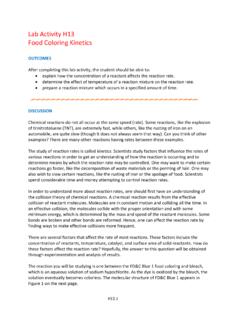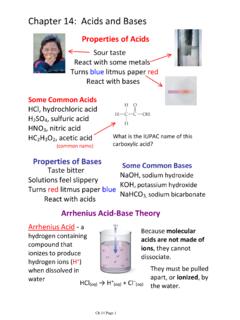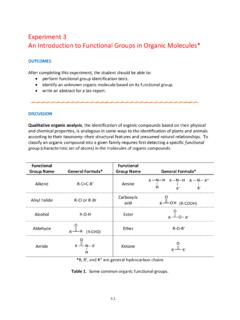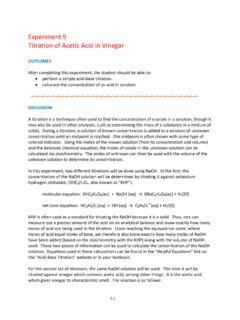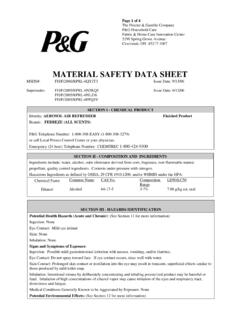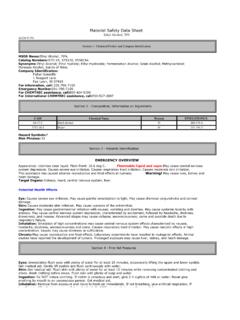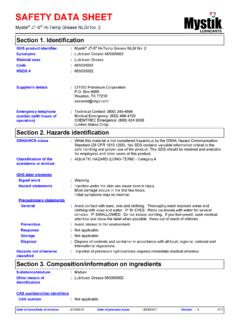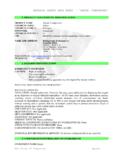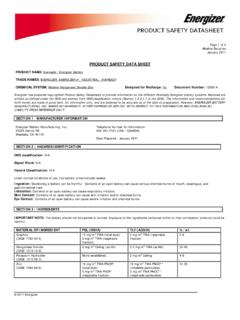Transcription of Material Safety Data Sheet - Anoka-Ramsey Community …
1 Material Safety data Sheet Sodium Hypochlorite, 6% 24 Hour Emergency Phone: CHEMTREC (US) 1-800-424-9300 Date of Preparation: 04/14/10 Revision: 04/14/10 section 1 - Chemical product and Company Identification BDH8036 Synonyms: Bleach; hypochlorous acid, sodium salt; soda bleach; sodium oxychloride CAS No.: 7681-52-9 Molecular Weight: Chemical Formula: NaOCl Manufacturer: Hawkins, Inc. Manufactured for: VWR International LLC 3100 E. Hennepin Avenue 1310 Goshen Parkway Minneapolis, MN 55413 West Chester, PA 19380 For More Information Call: 1-800-932-5000 Email: (Monday-Friday, 8:00am-5.)
2 00pm) section 2 - Composition / Information on Ingredients Ingredient CAS No Percent Hazardous ------------------------------- ------------ ------------ --------- Sodium Hypochlorite (as NaOCl) 7681-52-9 4-6% Yes Water 7732-18-5 Balance No section 3 - Hazards Identification Emergency Overview -------------------------- WARNING! HARMFUL IF SWALLOWED OR INHALED. CAUSES IRRITATION TO EYES AND RESPIRATORY TRACT. CAUSES SUBSTANTIAL BUT TEMPORARY EYE INJURY. Potential Health Effects ---------------------------------- Inhalation: may cause irritation to the respiratory tract, (nose and throat); symptoms may include coughing and sore throat.
3 Ingestion: May cause nausea, vomiting. Skin Contact: May irritate skin. Eye Contact: Contact may cause severe irritation and damage, especially at higher concentration. Chronic Exposure: A constant irritant to the yes and throat. Low potential for sensitization after exaggerated exposure to damaged skin. Aggravation of Pre-existing Conditions: Persons with impaired respiratory function, or heart disorders (or disease) may be more susceptible to the effects of the substance. section 4 - First Aid Measures Inhalation: Remove to fresh air. If not breathing, give artificial respiration. If breathing is difficult, give oxygen.
4 Get medical attention immediately. Ingestion: If swallowed, DO NOT INDUCE VOMITING. Give large quantities of water. Never give anything by mouth to an unconscious person. Get medical attention immediately. Skin Contact: Immediately flush skin with plenty of water for at least 15 minutes Sodium Hypochlorite, 6% Revised: 04/14/10 24 Hour Emergency Phone: CHEMTREC (US) 1-800-424-9300 Page 2 of 5 while removing contaminated clothing and shoes. Get medical attention immediately.
5 Wash clothing before reuse. Thoroughly clean shoes before reuse. Eye Contact: Immediately flush eyes with plenty of water for at least 15 minutes, lifting lower and upper eyelids occasionally. Get medical attention immediately. Note to Physician: Consider oral administration of sodium thiosulfate solutions if sodium hypochlorite is ingested. Do not administer neutralizing substances since the resultant exothermic reaction could further damage tissue. Endotracheal intubation could be needed if glottis edema comprises the airway. For individuals with significant inhalation exposure, monitor arterial blood gases and chest x-ray. section 5 - Fire-Fighting Measures NFPA Ratings: Health: 2 Flammability: 0 Reactivity: 1 Fire: Not considered to be a fire hazard.
6 Substance releases oxygen when heated, which may increase the severity of an existing fire. Containers may rupture from pressure build-up. Explosion: This solution is not considered to be an explosion hazard. Anhydrous sodium hypochlorite is very explosive. Fire Extinguishing Media: Use any means suitable for extinguishing surrounding fire. Use water spray to cool fire-exposed containers, to dilute liquid, and control vapor. Special Information: In the event of a fire, wear full protective clothing and NIOSH- approved self-contained breathing apparatus with full facepiece operated in the pressure demand or other positive pressure mode.
7 section 6 - Accidental Release Measures Ventilate area of leak or spill. Wear appropriate personal protective equipment as specified in section 8. Isolate hazard area. Keep unnecessary and unprotected personnel from entering. Contain and recover liquid when possible. Collect liquid in an appropriate container or absorb with an inert Material ( , vermiculite, dry sand, earth), and place in a chemical waste container. Do not use combustible materials, such as saw dust. Do not flush to sewer! US Regulations (CERCLA) require reporting spills and releases to soil, water and air in excess of reportable quantities. The toll free number for the US Coast Guard National Response Center is (800) 424-8802. section 7 - Handling and Storage Keep in a tightly closed container, stored in a cool, dry, ventilated area.
8 Protect against physical damage. Isolate from incompatible substances. Containers of this Material may be hazardous when empty since they retain product residues (vapors, liquid); observe all warnings and precautions listed for the product . section 8 - Exposure Controls / Personal Protection Airborne Exposure Limits: Sodium Hypochlorite: AIHA (WEEL) STEL 2 mg/m3 -OSHA Permissible Exposure Limit (PEL): ppm (TWA), 1 ppm (STEL) as Chlorine -ACGIH Threshold Limit Value (TLV): 1 ppm (TWA), 3 ppm (STEL) as Chlorine Ventilation System: A system of local and/or general exhaust is recommended to keep employee exposures below the Airborne Exposure Limits.
9 Local exhaust ventilation is generally preferred because it can control the emissions of the contaminant at its source, preventing dispersion of it into the general work area. Please refer to the ACGIH document, Industrial Ventilation, A Manual of Recommended Practices, most recent edition, Sodium Hypochlorite, 6% Revised: 04/14/10 24 Hour Emergency Phone: CHEMTREC (US) 1-800-424-9300 Page 3 of 5 for details. Personal Respirators (NIOSH Approved): If the exposure limit is exceeded, a full facepiece respirator with an acid gas cartridge may be worn up to 50 times the exposure limit or the maximum use concentration specified by the appropriate regulatory agency or respirator supplier, whichever is lowest.
10 For emergencies or instances where the exposure levels are not known, use a full-facepiece positive-pressure, air-supplied respirator. WARNING: Air-purifying respirators do not protect workers in oxygen-deficient atmospheres. Skin Protection: Wear impervious clothing, including boots, gloves, lab coat, apron or coveralls, as appropriate, to prevent skin contact. Eye Protection: Use chemical Safety goggles and/or full face shield where splashing of solutions is possible. Maintain eye wash fountain and quick-drench facilities in work area. section 9 - Physical and Chemical Properties Appearance: Odor: Colorless to yellowish liquid.

